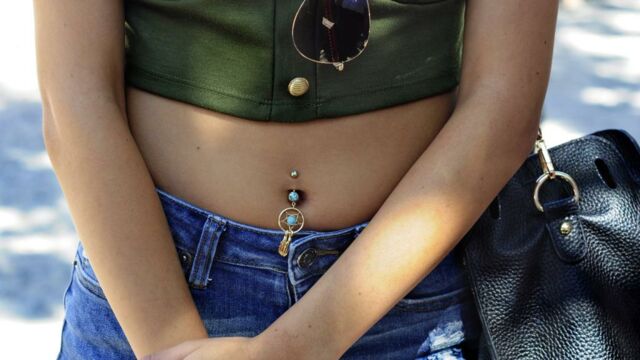Those dainty little pieces, dangling from the navel, are really a treat for the eye. Most often than not, a navel or a bellybutton piercing is considered to belong only to a taut tummy.
Discover our latest podcast
But wait, having a belly ring is not dependent on the shape of your body, but anatomical differences of the navel. Find out if a navel piercing is for you.
Dangers of the ring
The 'lip' of skin above the belly button is typically used for belly button piercings. Although most individuals can theoretically receive these sorts of piercings, if you want it to heal correctly, you need to have a good flap of skin above the belly button for the piercer to place the jewellery through.
You won't be able to get your belly button pierced if you have an ‘outie’ belly button. An ‘outie’ belly button is when you have the button protruding outside. The piercing in this region will especially be difficult given its shape.
But even then, many who do go ahead withthe piercing get it on the inside region of the navel. Infections in such a piercing are inevitable; it can spread to the internal organs and be fatal.
It is a risk most won’t take. Here is what an ‘outie’ looks like, in case you are unsure of the kind of button you have.

Tips to keep in mind
A piercing on your belly button is more prone to be infected than other regions of the body. It's quite easy for germs to harbour there.
Here is a checklist of important things to keep in mind before you get that piercing:
1. Sterile needle
With a sterile razor-sharp hollow needle, a competent piercer will perforate your skin, by safely removing a portion of the skin without damaging the surrounding tissues. It's less painful than piercing with a gun and facilitates a more natural healing process.
Whereas a septic needle will make it a breeding ground for bacteria to grow.
2. Right jewellery
An allergic reaction to an incorrect piercing is the most common thing to happen. Thus, it is vital to choose the right kind of piercing for yourself. Usually, a stainless steel ornament is a good bet, as it is long-lasting and less prone to allergic reactions.
3. Correct aftercare
Getting a piercing is a serious decision that necessitates extensive aftercare. It is okay to do so as long as the area is kept clean and bacteria-free. Taking care of your general health can help you recuperate faster and reduce your risk of complicationswith the piercings.
4. Diabetes and Haemophilia
If you have type 1 Diabetes, you should be aware that getting a piercing may put you at risk of infections. As a result of the discomfort, the experience of obtaining the piercing itself may create high blood glucose levels. Similarly, if you have bleeding disorders such as Haemophilia, it is advised by professionals to not get pierced at all, to avoid excessive bleeding and discomfort.
If irritation persists in spite of taking precautions, consult a professional immediately.















